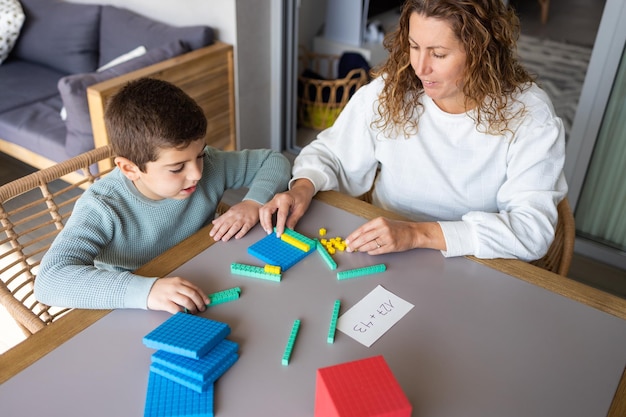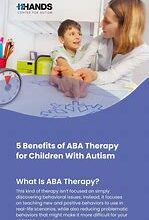
In the heart of North America, nestled against the breathtaking Rocky Mountains, unique approaches are employed to aid in the enhanced growth of young minds experiencing neurodiverse conditions. This expanse, where the peaks kiss the sky, has witnessed advancements in therapeutic methodologies which have successfully transformed countless lives.
Within our focus is a method that stands at the forefront of behavioral remedies, proving exceptionally beneficial. Although rooted in a psychology-based practice, it’s tailored specifically to those among the youth who have been diagnosed with neurological variations. This refined modality has opened new of hope for families across the location famously referred to as ‘The Centennial State’.
The aspirational journey embarked upon by many of these special young individuals inibsutes a significant change not just in their lives, but also within their immediate community. Notably, one specific city, synonymous with natural hot springs, takes pride in its efforts to make these life-changing benefits ubiquitous. The betterment of special lives through such practices is more than just heartwarming; it’s revolutionary.
Our discourse transports us to a world – both picturesque and supportive – where relentless efforts are actively reshaping future narratives for neurodiverse children and their There’s much to learn, investigate and share on this empowering treatment modality.
Overview of autism and applied behavior analysis approach
This section provides a broad outline of pervasive developmental disorders, specifically focusing on autism spectrum disorders, and the applied behavior analysis (ABA) approach as a common intervention strategy. We will not discuss specific in this opening paragraph, but instead present the overall aim and structure of the section.
Our exploration begins by discussing the general concept of autism, referred to scientifically as Autism Spectrum Disorder (ASD). This includes a brief look at its early signs, characteristics, and how it affects not only the individual’s life but also the family’s dynamics.
- The indicators an infant or toddler might exhibit that could denote ASD.
- The traits commonly associated with ASD, such as repetitive behaviors or interests, and difficulties with social interactions.
- The possible ways ASD could affect a family’s daily life and routines.
The subsequent part of this section focuses on the strategic approach of applied behavior analysis as one of the interventions for managing ASD. It provides an outline of what this involves, why it is beneficial, and the potential outcomes of such intervention.
- Explanation of the applied behavior analysis approach, including its main aspects and principles.
- A discussion on the advantages of this particular intervention strategy for managing ASD.
- A snapshot of the possible outcomes that could be achieved through the application of this approach.
In summary, this section aims to provide readers with a view of the landscape of autism and the role behavior analysis plays in addressing this disorder.
Benefits of Behavioral Modification Techniques for Youngsters on the Spectrum

Exploration into the realm of cognitive and behavioral interventions reveals a plethora of advantages for youngsters diagnosed with ASD (Autism Spectrum Disorder). Let’s dive into the ocean of remarkable and enhancements these interventions, particularly Applied Behavior Analysis, have to offer.
Increased Social Interactions
One exemplary benefit of these structured interventions manifested in improved social skills. Studies have shown that dedicated and consistent efforts towards teaching communication and interaction skills result in notable advancements in children’s ability to form and maintain social relationships. This can lead to drastic quality of life for the young participants, who previously struggled more heavily in these areas.
Improved Learning and Academic Performance
Behavioral modification techniques are incredibly advantageous when considering academic progress. Guided by these strategies, kids on the autism spectrum often display remarkable improvements in both general learning and school performance. They foster cognitive development and can promote the acquisition and understanding of various educational concepts that might be challenging for those with ASD. how to facilitate learning in these individuals can thus lead to more successful academic outcomes.
In conclusion, the benefits of behavior-focused interventions for kids diagnosed with ASD are immense and wide-reaching. They can encourage substantial enhancements in both social and academic realms, equipping these children with the skills they need to navigate their world more confidently. The impact of such structured and scientifically techniques should not be underestimated when planning therapeutic agendas for these youngsters.
Case studies and success stories from the mountain state
To illustrate the effect of treatment methods for individuals with ASD in the Centennial State, let’s look at some real-life examples. These stories shine a light on actual experiences and triumphs, offering encouragement and illuminating the pathway forward. We have a selection of the most touching and inspiring examples from the Rocky Mountain region.
Success Story 1

Firstly, consider the journey of an extraordinary little boy from the Pikes Peak area. Diagnosed at a young age, he began receiving the essential behavioral intervention his parents sought for him. Gradually, the improvements became more noticeable. Today, his interactions with and peers reflect the monumental leaps he’s made via therapeutic processes he’s been through.
- Using fewer gestures to communicate, now preferring to use verbal communication
- Improved responses to his name; previously extended delays were noted
- Capacity to follow instructions has increased, especially multi-step directives
- More emotionally expressive with his family, sharing joy and affection more readily
Success Story 2
A second example involves a young girl in the Front Range urban corridor. Once restricted by her limited interactive and affective skills, she’s breaking free from her shackles thanks to patient, and dedicated treatment. Her teachers and parents report the following ilmuence:
- Eye contact has significantly improved, building intimate connections with her family
- Use of echolalia has reduced; she now constructs her own sentences more often
- She shows enhanced adaptive skills, gaining more independence each day
- An increase in tolerant behaviors observed in group situations
Both stories serve as beacons of hope for many families dealing with similar challenges across the Centennial State’s urban areas and quiet mountain towns. The common element being well-structured treatment methods that envelope the individual’s needs. Each journey is unique, but they all the prospect of an enriched life filled with interaction, integration, and independence.




